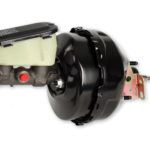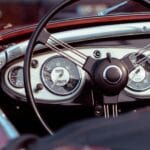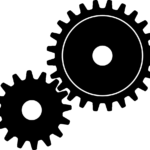Introduction
“The development of a family starts with a old grandfather” very rightly said as with the introduction of the transmission in an automobile vehicle, development of a device that can transfer fluctuating power (rotational motion) between 2 shafts became essential due to which various researches had been done and finally the engineering minds of that era came up with a system which is known as Clutch or more specifically a Cone clutch. The modern clutches we use today in vehicle are the progeny (descendent) of the cone clutch. The continuous modification in this field has led us to the development of the modern automatic clutch which is the boom in the automobile industry. So let’s know more about the great grandfather of the clutches i.e. cone clutch.
A cone clutch “oldest of all” Is a type of clutch system in which two mating members known as the male member and the female member designed in shape of cones are used, due to the mating of these 2 members frictional force due to the frictional contact between them is generated results in torque or power transmission between them.
The engagement and disengagement of the male and female member of the cone clutch is controlled by the clutch pedal.
Due to the large frictional area of contact and also due to the cone like shape of the male and female member of the cone clutch, This clutch system transmit high torque between the engine and the transmission shaft due to which it was widely used in heavy vehicles.
Need of a Cone Clutch
As the clutch system is responsible for the torque or power transmission between the engine and the transmission shafts which makes it the one of the most important part of an automobile vehicle. This gives rise to the development of the cone clutch, so we need cone clutches because-
- Engine has its limitation to give a certain amount of torque and speed due to which a transmission was introduced and coupled with the engine shaft for this coupling between 2 shafts i.e. engine shaft and the transmission shaft cone clutch was used which made it possible to obtain different torque and speed ratios by connecting and disconnecting the above 2 shafts.
- Due to the high frictional force of contact and due to the complete interlocking between the male and the female member of the cone clutch, this clutch enables high torque transmission, even higher than the single plate clutch.
- In cone clutch ,The efforts need to keep the clutch engaged with the flywheel of the engine is less as the small axial force is required for engagement of the clutch, that is why they had been used in wide applications where high torque was the first priority.
- Due to its simple design as compared to other types of clutches which made it cost effective, they were widely used in small industries.
- As they provides high torque which is the need of some low speed off road vehicles specially off road all terrain vehicles , they are still used in some motor sporting off road vehicles.
- Due to their proper interlocking between female and the male clutch , cone clutches are used in various manual transmissions as a synchronisers.
Also Read:
Types of Gearbox – Complete Explanation
What is Stirling Engine – Types, Mian Parts, Working and Application?
What is CVT – Continuously Variable Transmission and How it Works?
Main Components
The main components of a cone clutch are-

1. Female Cone- It is the part of a cone which is connected to the flywheel of the engine and also rotates with it, this cone is having inner cutting cone shaped groove over which the male cone interlocks and make frictional contact with it in order to engage the drive.
2. Male Cone- It is the part of a cone clutch which is connected to the transmission shaft and is machined in the shape of a solid cone over which frictional material is attached.
- When the clutch pedal is released, Male cone makes contact with the female cone due to the spring action provided by the released spring behind it and the engagement of the drive takes place.
3. Spring – Normal thrust spring located behind the male cone is used for engagement and disengagement of the clutch.
- When the clutch pedal is pressed, thrust spring compresses and the disengagement of the clutch takes place and the releasing of clutch pedal expands this spring due to which engagement of the clutch takes place.
4. Shafts- The female cone which is directly attached to the flywheel is mounted over a solid shaft.
- The male cone on the other hand is mounted over the splined shaft.
5. Sleeves- Sleeves having inner splines attached to the male cone mounted over the splined shaft is used for the to and fro motion of the male cone.
6. Pedal– A clutch pedal operated by the driver is used for input regarding the engagement and the disengagement of the clutch.
- When the pedal is pressed, The pedal effort is transferred to the male clutch through the fulcrum attached at its other end which in turn compresses the spring and disengagement of the clutch takes place.
7. Flywheel- It is the part of the engine used to store the engine output it can be considered the part of a clutch system as the female cone of the cone clutch is attached to the flywheel and rotates with it.
Also Read:
What is Firing Order of 4 and 6 Cylinder Engine?
How Suspension System Works in Automobile?
How Engine Cooling System Works?
Working of Cone Clutch
Engagement
When the clutch pedal is released the fulcrum attached to the other end of the pedal rotates and pushes the attached sleeve through which the male cone is attached outwards ,which in turn interlocks or make contact with the female clutch and finally the engagement of the clutch takes place.
The stiffness provided by the thrust spring mounted behind the male clutch is used for continuous engagement of the clutch.
Disengagement
When the driver presses the pedal in order to change gear the fulcrum attached rotates which in turn pulls the outer sleeve along with the male clutch attached to it.
Due to this pull action provided by the clutch pedal, the thrust spring mounted behind the male cone compresses and finally the disengagement of the clutch takes place.
Application
- A leather-double cone clutch was used in Mercedes 37/90 PS in 1914.
- Mercedes Grand Prix Rennwagen used double cone clutch in 1914.
- Cone clutches are used in various manual transmissions as synchronisers.
- They are used in various heavy machines.








